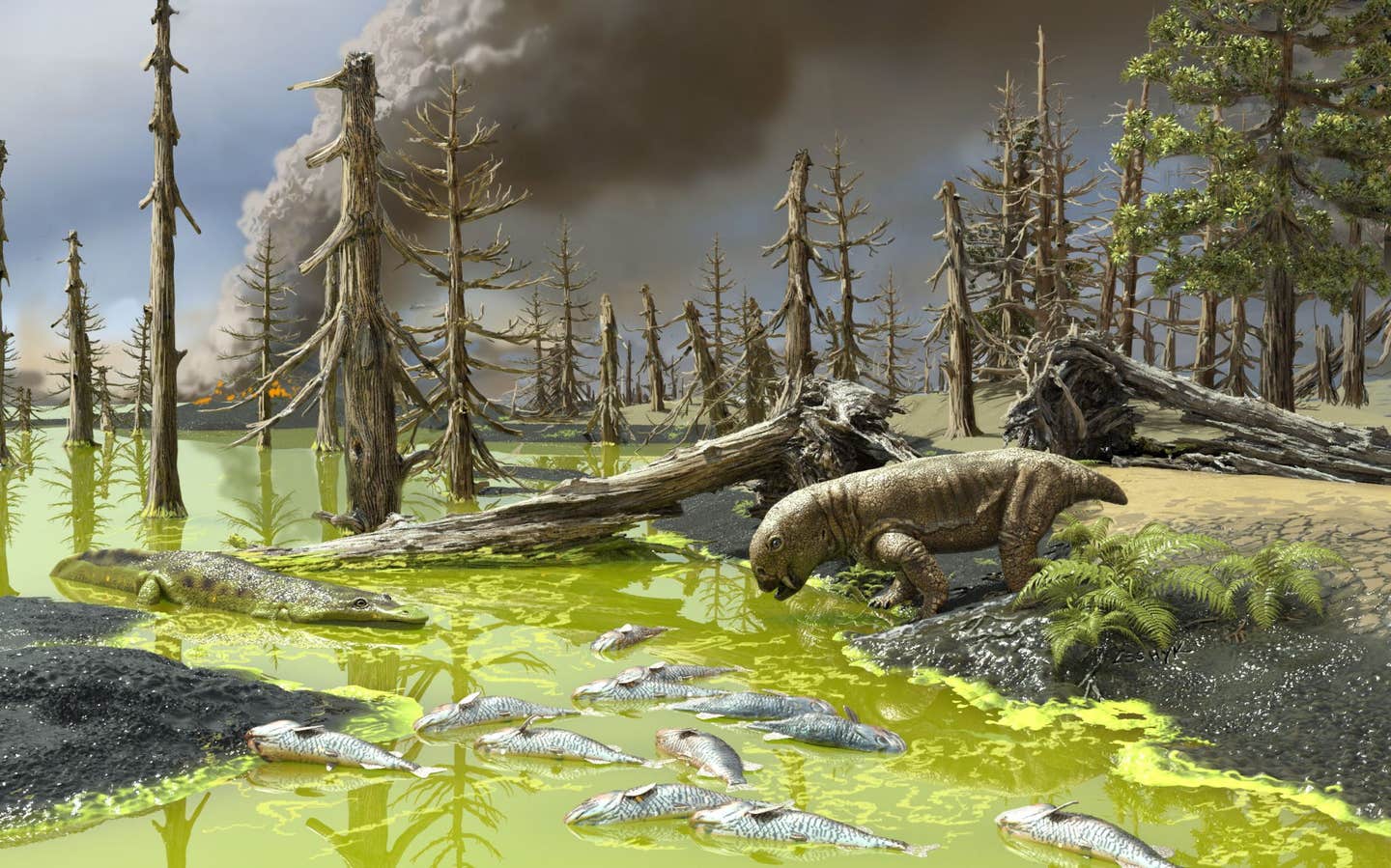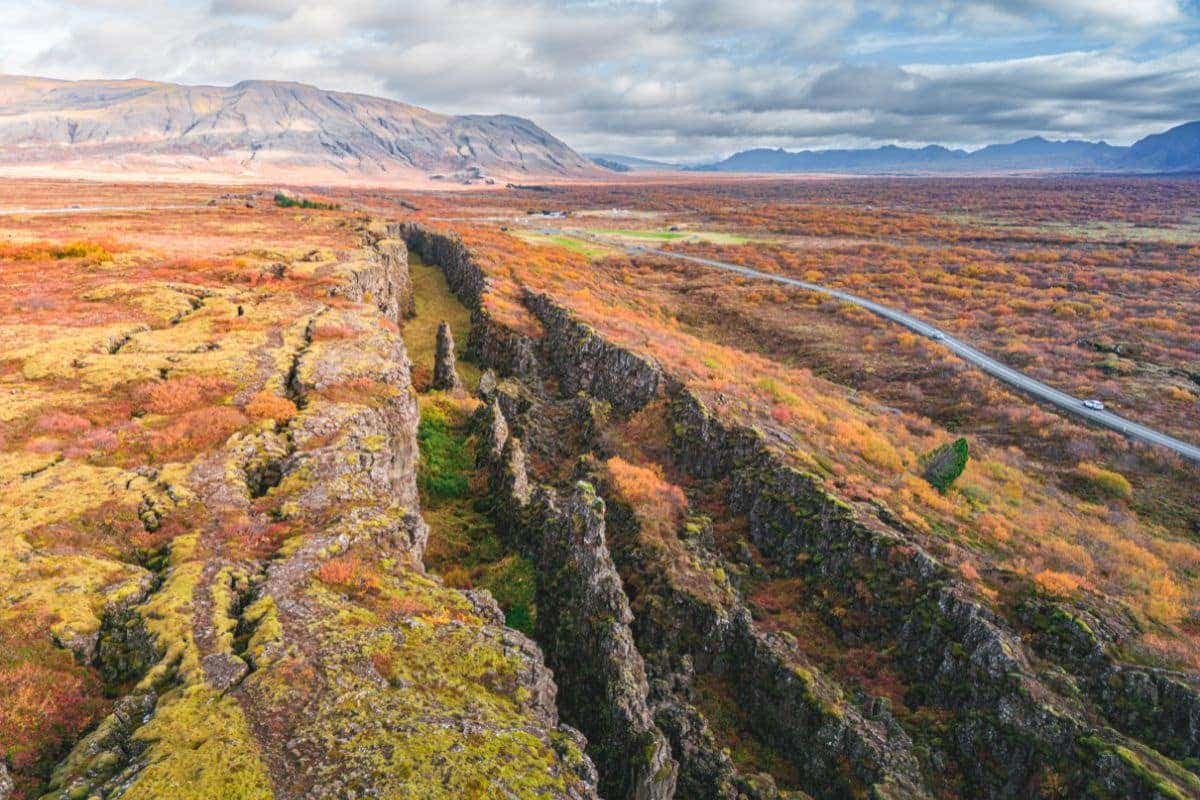250 million years ago, Earth faced its worst extinction—Are we next?
After the End-Permian mass extinction, forests took millions of years to recover. Scientists reveal the lessons this holds for today’s climate crisis.

Scientists uncover how forests rebounded after Earth’s deadliest mass extinction. (CREDIT: CC BY-SA 4.0)
About 250 million years ago, Earth faced its greatest catastrophe. The End-Permian Event wiped out more than 80% of ocean species and devastated life on land. While the mass extinction’s effects on marine ecosystems are well documented, the story of how land plants recovered has remained a mystery—until now.
A team of scientists from University College Cork, the University of Connecticut, and the Natural History Museum of Vienna analyzed fossil plants and rocks from eastern Australia’s Sydney Basin.
Their research, published in GSA Bulletin, reveals a slow and unpredictable recovery process shaped by extreme climate shifts. Their findings shed light on how Earth’s forests eventually rebounded and offer insights into how today’s ecosystems might respond to modern climate change.
A Harsh Beginning for Surviving Plants
The first signs of life returning to the land after the End-Permian catastrophe came from conifer-like trees, similar to modern pines. These resilient plants began to take hold, forming the foundation of new ecosystems. However, the recovery was anything but steady.
Approximately two million years after the extinction event, Earth entered the Late Smithian Thermal Maximum, a period of intense global warming that lasted about 700,000 years. Rising temperatures pushed ecosystems to their limits.
The heat devastated the early conifer forests, replacing them with hardy, shrubby plants similar to today’s clubmosses, which could tolerate extreme conditions. But even these stress-resistant species struggled in the unstable environment.
It wasn’t until a cooling period, known as the Smithian-Spathian Event, that stability returned. This shift allowed larger plants, particularly seed ferns, to expand and form new forests.
Unlike the earlier conifers, these plants thrived in the cooler conditions and became dominant in high-latitude regions. This transformation marked a major step toward the lush forests that would define the Mesozoic era—the age of the dinosaurs.
Related Stories
A Complex and Staggered Recovery
The journey back to stable forest ecosystems was not a simple, one-way process. Instead, plant communities changed in waves over millions of years. The research team found that different plant groups dominated at various times, responding to shifting temperatures and environmental conditions.
Initially, peltasperm seed ferns were among the first to establish, persisting for about 200,000 years. They were followed by voltzialean conifers, which flourished for around 1.5 million years before being wiped out by extreme heat.
Afterward, pleuromeian lycophytes, a group of stress-tolerant plants, took over for roughly 800,000 years. Eventually, as the climate cooled, umkomasialean seed ferns replaced them, becoming the dominant flora for much of the Middle and Late Triassic.
This pattern of plants rising and falling in response to climate shifts highlights a key finding: the recovery of forests was not a smooth or linear process. Instead, it was a staggered, stop-and-go journey that took millions of years.
The delayed rise of lycophytes in the polar south—by nearly 1.7 million years compared to other regions—further illustrates how ecosystem recovery varied across different latitudes.
What This Means for Today’s Climate Crisis
Understanding how ancient ecosystems adapted to extreme climate swings offers crucial lessons for the present. Plants play a central role in maintaining ecological balance, serving as the backbone of food webs and acting as natural carbon sinks. Their ability to store carbon helps regulate Earth’s climate, making them vital in the fight against global warming.
“The disruption of these systems can have impacts lasting hundreds of thousands of years,” explains Marcos Amores, the study’s lead author. “Protecting today’s ecosystems is more important than ever.”
The study underscores the long-lasting consequences of environmental collapse. Even after the worst mass extinction in Earth’s history, forests eventually recovered—but they were never the same. The species that once dominated were lost forever, replaced by entirely new plant communities. This echoes concerns about modern biodiversity loss. While nature can rebound, the ecosystems of the future may look drastically different from those of today.
Dr. Chris Mays, leader of the Mass Extinction Group at University College Cork, emphasizes the irreversible nature of extinction. “The term ‘recovery’ can be misleading,” he says. “Forests recover eventually, but extinction is forever.”
A Reminder from Earth’s Deep Past
The ancient world’s slow path to recovery serves as a warning for the present. Today, human-driven climate change threatens plant ecosystems worldwide. Rising temperatures, deforestation, and habitat destruction are pushing many species to their limits. By studying how ancient plants survived past crises, scientists hope to better predict and mitigate the impacts of climate change on modern forests.
This research reveals an undeniable truth: Earth’s ecosystems are resilient, but they are not invincible. Once species disappear, they do not return.
The story of prehistoric forests is both a testament to nature’s ability to adapt and a stark reminder of the cost of ecological collapse. If history is any guide, the choices made today will shape the landscapes of tomorrow.
Note: Materials provided above by The Brighter Side of News. Content may be edited for style and length.
Like these kind of feel good stories? Get The Brighter Side of News' newsletter.
Joseph Shavit
Head Science News Writer | Communicating Innovation & Discovery
Based in Los Angeles, Joseph Shavit is an accomplished science journalist, head science news writer and co-founder at The Brighter Side of News, where he translates cutting-edge discoveries into compelling stories for a broad audience. With a strong background spanning science, business, product management, media leadership, and entrepreneurship, Joseph brings a unique perspective to science communication. His expertise allows him to uncover the intersection of technological advancements and market potential, shedding light on how groundbreaking research evolves into transformative products and industries.



